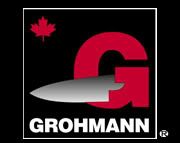320 years ago today my ninth great-grandmother was killed (shot and burned) by French and Indians at Schenectady, New York. Her daughter, my eighth great-grandmother, survived the attack. Also killed was my tenth great-grandfather and one of my eighth great-granduncles whose brains were dashed out against the wall. I thought that I might take the time to remember Engeltie Barentse Blom Vrooman, Hendrick Meese Vrooman, and Heindrick Vrooman by including this account of the raid. At the conclusion you will find a list of those killed and carried away to Canada.
The fate of Schenectady was sealed in the middle of January, 1690, when 114 Frenchmen and 96 Sault and Algonquin Indians, most of who had been converted by the Jesuits, started from Montreal to attack English outposts to the south. It was part of a master plan of Count Frontenac, governor to Canada, to fulfill the commission of French King Louis XIV to "build a new empire in America."
They came down across the frozen reaches of the St. Lawrence and finally, in about six days, down to a point at what is now Fort Edward, where the French officers held council on the plan of attack. It was here that they began to compromise with the Indian leaders on the feasibility of attacking Schenectady instead of the original objective, Fort Orange (Albany).
Another journey of about 17 days down to the Mohawk Valley brought the war party scarcely two miles from the fur-trading post beside the Binnekill on February 8. It was about four o'clock in the afternoon and a blizzard came howling down from the north-west, icy winds swirling snow about the would-be attackers as they huddled in a final council near what is now Alplaus.
The French leaders, Lieutenants Le Moyne de Sainte Helene and Daillebout de Mantet, ordered Indian scouts to cross the Mohawk and see what precautions the Dutchmen had made against the enemy attack. The French were well aware that attack warnings had been posted in the valley communities and they did not know how well the Schenectady stockade might be garrisoned.
The Dutchman's fireside on that night of Feb. 8, 1690, glowed with the radiance of humble content. Within the raftered room, its floor and ceiling reflecting Holland cleanliness, he warmed himself before the crackling logs. He was smugly certain that his house was safe from attack - on a night such as this, even the foolhardy Frenchmen would not be expected from the frozen north regions.
The scouting party sent to spy on the objective returned to the Alplaus encampment about 11 p.m. and reported to the French commanders that no one was guarding the stockade; even the north gate facing the river had been left open. This information and the extreme cold, prompted the decision to attack at once rather than wait until 2 a.m. as originally planned.
The half-frozen invaders crossed the river on the windswept ice and soon were inside the stockade, forming a cordon around the houses that now were quiet with sleep. Suddenly, the high-pitched war cries of the warriors split the silence, the signal for a bloody massacre that was to last fully two hours.
Houses were quickly put to the torch and inhabitants who came stumbling out in their nightclothes were shot or tomahawked and their scalps taken by the shrieking Indians. Neither woman nor children were spared, and soon their bodies lay along the snow-covered streets, Illuminated now by the fitful glow of the burning dwellings.
Adam Vrooman (my 9th great-grandfather), whose house stood on the west corner of Front and Church Streets, fought so desperately that his life and property were spared by the French. It was a tragic stand by the valiant Dutchman, however. His wife and child were killed and his son Barent and a Negro servant were carried away as captives.
About 60 persons were killed outright, including 10 women and 12 children. Some managed to escape from the burning stockade area to seek shelter with families some miles distant. It is said that many of these died of exposure in the bitter cold before they got far.
The ride of Simon Schermerhorn to warn Albany of the French invasion often is sited as a testimony to the stamina of the Dutch settlers. When the massacre started, Simon mounted a horse and managed to escape by the north gate. Though wounded, he made his way through the snow-drifted Niskayuna Road until he reached Albany about 5 o'clock the next morning. Later, a party of Albany militia and Mohawk warriors pursued the northern invaders and killed or captured 15 or more within sight of Montreal.
A grim scene greeted the first streaks of dawn as the French rounded up their prisoners and spare horses and supplies to begin the long trek back to Canada. The ruins of the burned homes were steaming mounds beside the blackened chimneys; victims still lay in blood-stained snow where they had been killed or dragged.
A party had been sent across the river early that Sunday morning to the Sanders mansion in Scotia. "Coudre Sander" (John A.) Glen was told that he would have the privilege of choosing his relatives from among the prisoners in return for having been kind to some French captives when they were in the hands of the Mohawks a few years earlier. Glen claimed as many "relatives" as he dared.
The French and Indians left early in the afternoon with 27 prisoners and 50 good horses.
The utter helplessness of the Schenectady inhabitants during the massacre - many offered no resistance since they had no time even to seize their weapons - was shown by the fact that only two of the enemy were killed and one severely wounded. However, aside from the fact that a long and difficult sortie into the English territory had been accomplished, it is doubtful that French authorities considered the mission a great success.
By capturing Albany, and perhaps destroying it, the French might have succeeded in detaching the Iroquois from the English besides holding the key to the navigation of the Hudson. But it was not done, and now the whole English province was stirred up like a hornet's nest over the carnage wrought at Schenectady.
The Dutch village which had begun its settlement in 1662 had suffered a setback so severe, that three decades later, there was some doubt it would be rejuvenated. The uncertainty of future safety of border inhabitants and the utter dejection which prevailed after the massacre raised serious doubts among the survivors as to the expediency of rebuilding the village and cultivating the soil.
The township had been depopulated since the massacre. Records of 1698, for example, listed 50 men, 41 women, and 133 children - or a total of 224 persons - living in the area from Niskayuna to the Woestyne.
So for the decade that followed the massacre and closed out the 17th century, Schenectady and its inhabitants presented an unhappy, but industrious, picture of a settlement determined to rise like a Phoenix out of the ashes.
The Schenectady Massacre:
Settlers Killed and Captured
This is a list of people who were killed and captured by the French and Canadian Indians who invaded Schenectady, NY on the 9th of February 1689/90 that was posted on the Dutch Colonies Mail List.
YE PEOPLE KILD AND DESTROYED BY YE FRENCH OF CANIDA AND
THERE INDIANS AT SKINNECHTADY TWENTY MILES TO YE
WESTWARD OF ALBANY BETWEEN SATURDAY AND SUNDAY YE
9TH DAY OF FEBRUARY 1689/1690
Aertse, Jorls shott and burnt 1
Alexander, Robt souldr of Capt. Bulls shott 1
Alolff, Mary wife of Cornelis Viele Junr Shott 1
Andries, Daniel & George 2 souldiers of Capt Bull 2
Bratt, Ands Arentse shott & Burnt & also his childn 2
Christoffelse, David & his wife with 4 Children all burnt in there house 6
Church, Serjt of Capt Bull's Compy 1
de Goyer, Jan Roeloffse burnt in ye house 1
Gerritse, Sander ye sonne of Hysbert Gerritse kild & burnt 1
Grant, Ralph a souldler in ye fort shott 1
Harmense, Frans kild 1
Hessellng, Robt shott 1
Jansse, Barent Killd & Burnd his sonne kild 2
Janz, Antje doughter of Jan Spoor kild & burnt 1
Marc ellis, Gerritt and his Wife & childe kiled 3
Pleterse, Wm kild 1
Potman, Joh: kild his wife kild & her scalp taken off 2
Schaets, Reynier and his sonne kild 2
Skermerhoorn, Johannes ye sonne of Symon 1
3 negroes of Symon Skernerhoorn 3
Talmidge, Enos Leift of Capt Bull kild & burnt 1
Tassemaker, Dome Petrus ye Minister kild & burnt In his house 1
Teunise, Sweer shott & burnt his wife kild & burmt 2
4 negroes of ye said Sweer Teunise ye same death 4
Van Eps, Jan and his sonne & 2 of his chilkren kild 4
a negro of dito Van Eps 1
Viele, Mary wife of Dowe Aukes & her 2 children killd 3
and his negro Woman Francyn 1
Vroman, Engel the wife of Adam Vroman shot & burnt her child the brains dashed out against ye wall 2
Vroom an, Hind Meese & Bartholomeus kild & burnt 2
2 negroes of Hind Meese ye same death 2
Wemp, Myndert killd 1
a french girl Prisoner among ye Mohogs kild 1
a Maquase Indian kild 1
In all 60
LYST OF YE PERSONS WHICH YE FRENCH AND THERE INDIANS HAVE
TAKEN PRISONERS ATT SKINNECHTADY AND CARIED TO CANIDA
YE 9TH DAY OF FEBRUARY 1689/90
Baptist, Jan sonne of Jan Van Epps 1
Bouts, Stephen adopted sonne of Geertje Bouts 1
Burt, David belonging to Capt Bull's Compe 1
Gerritse, Stephen ye sonne of Gysbert Gerritse 1
Groot, Abraham, Claes, Dyrck, Phillip & Symon
all 5 sonnes of Symon Groot 5
Harmense, Claes sonne of Franse Harmense 1
Janse, Arnout sonne of Paulyn Janse 1
Marks, Joseph of ye Capt Bull's Compe 1
Purmurent, Lawrence sohne of Claes Lawrence Purmurent
Switts, Isaak Connellse & his eldest Sonne 2
Teller, Johannes and his negro 2
Vedder, Albert & Johannes sonnes of harme Vedder 2
V iele, Arnout ye sonne of Arnout Corn Viele ye Interpr 1
Vroman, Barent ye sonne of Adam Vroman & ye neger 2
Webb, John a souldier Belonging to Capt Bull 1
Wemp, John sonne of Myndt Wemp & 2 negroes 3
a negro of Barent Janse
In all 27
Monday, February 08, 2010
Subscribe to:
Post Comments (Atom)






















No comments:
Post a Comment